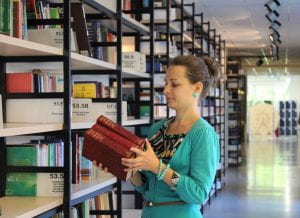
Resourcing the curriculum, what does this mean?
When I worked for a year as a temporary teacher in charge of the library (before beginning this masters) I thought resourcing the curriculum was providing resources for students and staff. This is in part true, however, my evaluation and selection of resources were based on limited criteria. These were:
- relevant to the curriculum
- appealing to users – eye catching design (front cover, graphics/photos/illustrations in resource), useful features such as quick facts, easy to read ( level, style – such as graphic novel)
- current
- closing a gap in the collection
- popular (for student literature)
- from a noteable list (such as Premier’s Reading Challenge new book or Children’s Book Council Award nominee)
After readings in this subject I now realise that these criteria were a good start to evaluation and selection but there are elements I hadn’t considered when resourcing the curriculum. Referring specifically to collection evaluation and selection there are more criteria I could add. According to Australian Library and Information Association Schools and Australian Victorian Catholic Teacher Librarians (2017, p.12) these include:
- respectful of all peoples – free from stereotypes and roles in society based on gender .
- authoritative – the author is credible in this field of expertise.
Kimmel (2014) adds:
- suitability to reader – the content is emotionally and intellectually appropriate for the user.
E-books were an area I was interested in but didn’t have the opportunity to purchase. When I do I will take into account Zipke’s (2014) criteria for evaluating e-books including navigation, sound, interactions and teaching specific skills. There is also the area of digital resource evaluation, with the below criteria outlined by Gregory (2019, p.56):
- Does it have authority? Is it from a reputable source?
- Do features make it more accessible to users than print resources?
- Are there licencing costs and restrictions?
- Can the library support the technology – hardware and software?
When purchasing World Book Online (WBO) I unknowingly took into account Gregory’s criteria. It is a reputable source (having previously published hardbound print editions of encyclopedias). Features, including search functions and highlighting text to speech make it easier to access, especially for those students with print difficulties. I examined the licencing costs and restrictions and managed to negotiate a deal with the representative for the first year of fees. Whilst the library didn’t have the computers to support the use of WBO it was accessible to the teachers and students via online log in and therefore could be used on the smartboards in classrooms, classroom access to laptops and at home.
Knowing these extra criteria will help me to select the most appropriate resources in the future for user needs.
References:
Australian Library and Information Association Schools and Victorian Catholic Teacher Librarians. (2017). A Manual for Developing Policies and Procedures in Australian School Library Resource Centres (2nd edition). https://www.alia.org.au/sites/default/files/ALIA%20Schools%20policies%20and%20procedures%20manual_FINAL.pd
Gregory, V. (2019). Collection development and management for 21st century library collections: An introduction (2nd ed). American Library Association.
Kimmel, S.C. (2014). Developing collections to empower learners, American Library Association. ProQuest Ebook Central. http://ebookcentral.proquest.com/
Zipke, M. (2014). Building an E-Book Library. Reading Teacher, 67(5), 375–383. https://doi.10.1002/TRTR.1221

